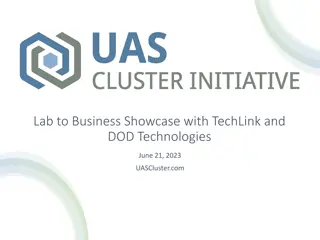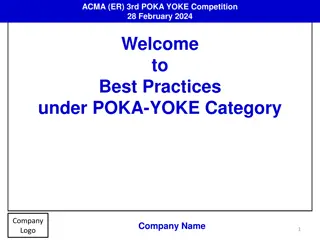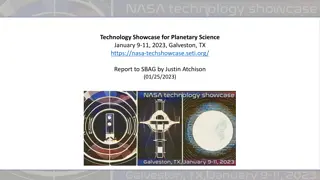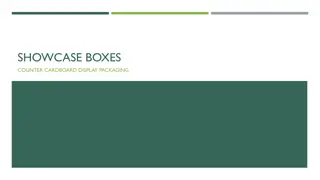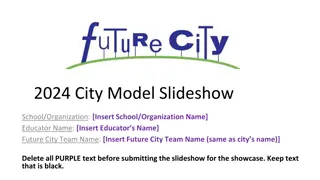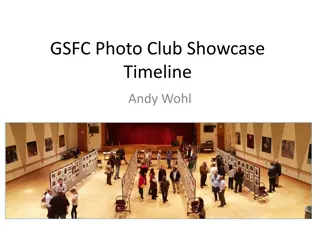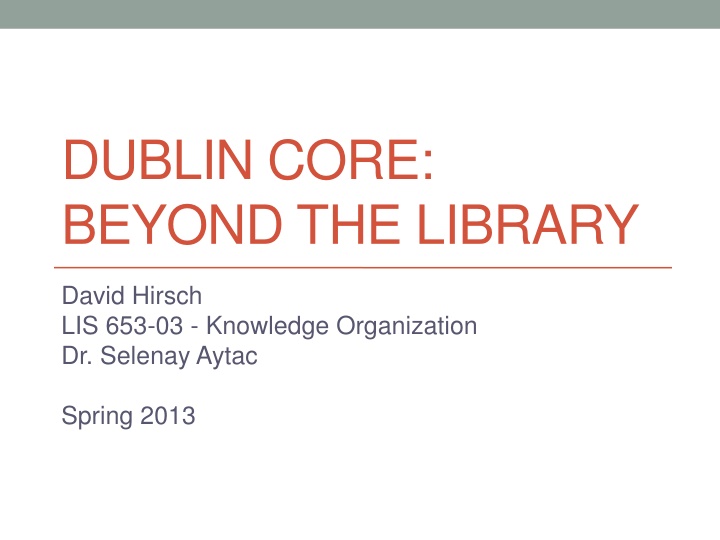
Exploring Dublin Core Metadata Beyond the Library
Discover the benefits and uses of Dublin Core metadata elements outside the library setting. Learn about the standard elements, qualifiers, and guidelines for metadata creation. Explore real-world examples of Dublin Core usage in projects like digitization and video repositories.
Download Presentation

Please find below an Image/Link to download the presentation.
The content on the website is provided AS IS for your information and personal use only. It may not be sold, licensed, or shared on other websites without obtaining consent from the author. If you encounter any issues during the download, it is possible that the publisher has removed the file from their server.
You are allowed to download the files provided on this website for personal or commercial use, subject to the condition that they are used lawfully. All files are the property of their respective owners.
The content on the website is provided AS IS for your information and personal use only. It may not be sold, licensed, or shared on other websites without obtaining consent from the author.
E N D
Presentation Transcript
DUBLIN CORE: BEYOND THE LIBRARY David Hirsch LIS 653-03 - Knowledge Organization Dr. Selenay Aytac Spring 2013
Introduction Benefits of Dublin Core Metadata Element Set Dublin Core Elements and Qualifiers Uses of DC Outside the Library Guidelines for DC Metadata Creation
Benefits of Dublin Core (DC) What is Dublin Core? Metadata standard of 15 elements, used for describing and cataloging electronic resources. Result of 1995 workshop by Online Computer Library Center (OCLC) in Dublin, Ohio. Benefits? Elements are optional. Elements are repeatable. Elements allow qualifiers for refinement. DC can describe all types of resources, including new electronic and digital data types. DC can cover descriptive, structural and administrative metadata.
DUBLIN CORE ELEMENTS Instantiation Elements Date Format Identifier Language Content Elements Title Subject Description Type Source Relation Coverage Additional Elements Audience Provenance RightsHolder Intellectual Property Elements Creator Publisher Contributor Rights
Dublin Core Record with Qualifiers Dublin Core qualifiers can add refinement and granularity to element descriptions. Like elements, qualifiers are optional and repeatable. This DC record includes qualifiers for Identifier, Description, and Subject elements.
Using DC: Example The Walters Islamic Manuscript Digital Project Walters Art Museum, Baltimore Md. Digitization project of art and calligraphy, 9-19thcentury 2 Metadata Entry Steps 1. Before digitization: Preliminary metadata entered into web-based database 2. After digitization: Cataloger adds more information. Authors, artists, scribes, dates, materials, languages, keywords
Using DC: Example Digital Video Repositories Ball State University Libraries Digital Media Repository: Ball State s video collection, includes commencement speeches, WWII films. Descriptive records mapped into Dublin Core. http://libx.bsu.edu Folkstreams.net: documentary films of American folk culture. Mapped into Dublin Core. http://www.folkstreams.net Shannon County Film: original rolls of documentary film footage. MARC to Dublin Core crosswalk. http://library.missouristate.edu/projects/scf/index.html
Using DC: Example Digital Video Repositories (continued) Australian Center for the Moving Image (ACMI): Collections of film, television, video clips used at lending library, theater screenings, student filmmakers work. Metadata records described directly with Dublin Core. http://www.acmi.net.au NJVid (New Jersey Digital Video Repository): Centralized video portal from educational institutions in NJ. Record descriptions in Dublin Core, MARC, and MODS. http://www.njvid.net Windows on Maine: Streaming videos on history of Maine. Union catalog, MARC to Dublin Core Crosswalk. http://windowsonmaine.library.umaine.edu
Using DC: Example Dspace Dspace is an open source digital asset management tool used worldwide by institutions including public and private colleges and universities and a variety of non-profit corporations. (Kurtz, 2009) http://www.dspace.org Dublin Core s elements and qualifiers are central to Dspace.
Guidelines for DC Metadata Creation Guideline #1: Resource description should be as complete as possible. Try your best to fill as much detail as you can, see what can be supplied that can t be found when examining the resource. Leave element blank as a last resort. Guideline #2: Resource description should be consistent. Consistency helps human users with information retrieval, reduces cognitive overload. Use controlled values when possible. Coleman, 2005, p. 157
References Bird, S., Simons, G. (2003). Extending Dublin Core metadata to support the description and discovery of language resources. Computers and the Humanities, 37, 375-388. Bockrath, D., Case, C., Fetters, E.R., & Herr, H. (2010). Parchment to pixel: the Walters Islamic manuscript digital project. Art Documentation: Journal of the Art Libraries Society of North America, 29, 14-20. Coleman, A. (2005). From cataloging to metadata: Dublin Core records for the library catalog. Cataloging & Classification Quarterly, 40, 151-181. Kurtz, M. (2009). Dublin Core, DSpace, and a brief Analysis of three university repositories. Information Technology and Libraries, 29, 40-46. Taylor, A. G. & Joudrey, D. N. (2009). The Organization of Information (3rd Ed.). Westport, CT: Libraries Unlimited Weagley, J., Gelches, E., & Park, J. (2010). Interoperability and metadata quality in digital video repositories. Journal of Library Metadata, 10, 37-57. doi: 10.1080/19386380903546984





